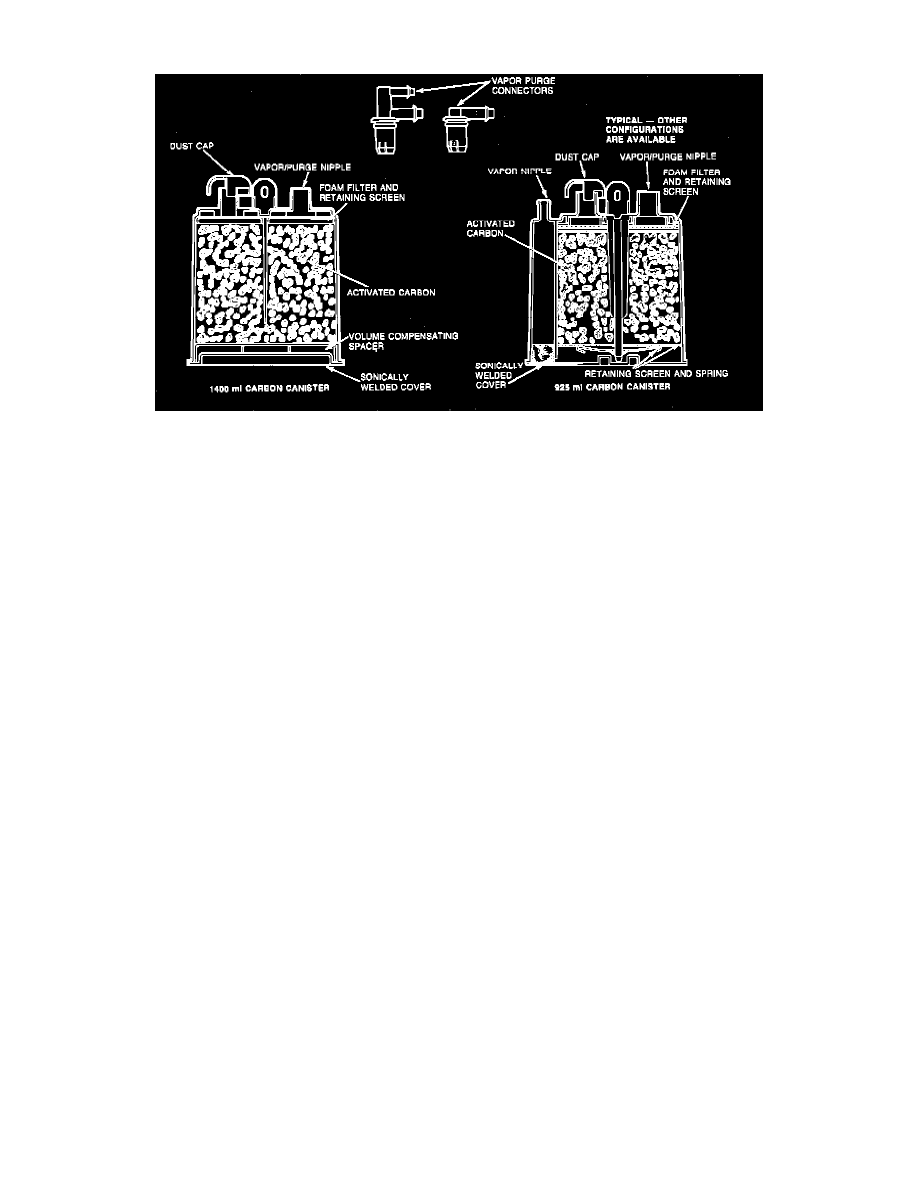Aerostar AWD V6-183 3.0L (1991)

Charcoal Canister: Description and Operation
Carbon Canisters, Typical
The Charcoal Canister is normally located within the engine compartment, or along the frame rail, and is filled with activated charcoal granules.
Activated charcoal is used as a vapor trap because of its great surface area, holding up to one-third its own weight in fuel vapors. Each gram of activated
charcoal has a surface area of 1,100 square meters, or more than a quarter acre.
The canister is connected to the fuel tank by a vapor hose with an in-line metering-type vapor valve. Another vacuum/vapor hose connects the canister to
the intake manifold. This second hose may contain an in-line purge control valve or solenoid. The charcoal canister receives and stores fuel vapors, when
the engine is OFF or when the vapors are not being routed directly to the induction system, while the engine is running.
During purge conditions, as manifold vacuum is applied to the canister, fresh air enters the Evaporative Emission System through the fuel filler caps
vents. The fresh air passes over the charcoal in the canister allowing the stored fuel vapors to pass into the induction system for burning.
